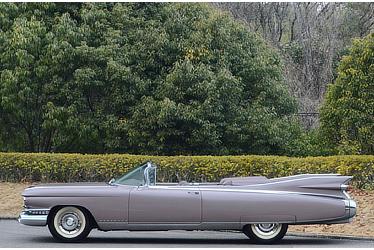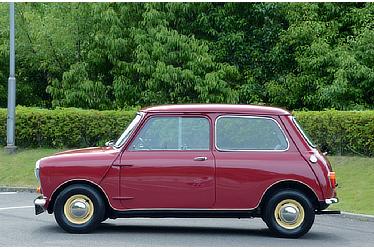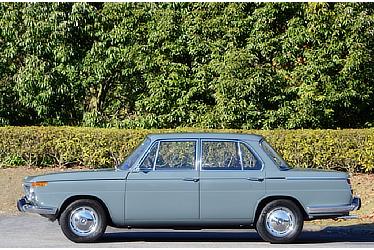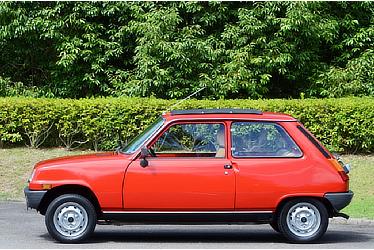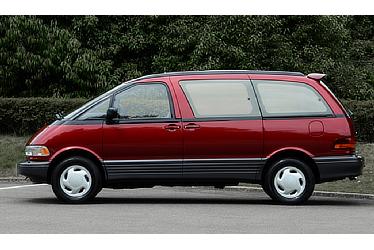Dec. 20, 2016
Toyota Automobile Museum Completes Update of Permanent Exhibits
at its Main Building
Nagakute City, Japan, December 20, 2016―The Toyota Automobile Museum, a Toyota Motor Corporation cultural facility located in Nagakute City, Aichi Prefecture, is currently revamping its permanent exhibits. The refurbishment, which is being implemented in stages, is scheduled to be completed in entirety by the museum's 30th anniversary in 2019. Updates to the third floor of the main building include the addition of 19 vehicles which are being displayed in a permanent exhibit for the first time. The new exhibits will be opened to the public on January 4, 2017.
In response to globalization trends, the museum reviewed its original objective at the time of its establishment in 1989 from current perspectives: presenting the history of the gasoline automobile since its invention. The series of updates is intended to allow visitors to be familiarized with automotive history and culture, and to also convey to more people about the evolution of automobile industries worldwide, including Japan, in a more accessible manner. The automotive industries in various countries have been closely intertwined with one another throughout the course of history.
The first phase of the refurbishment, which opened on the second floor of the main building in January 2016, features exhibits in eight zones that cover the period from the dawn of the automobile age at the end of 19th century till the 1950s.
The current phase of the refurbishment would see the addition of 19 vehicles that will be displayed as permanent exhibits for the first time. The third floor of the main building where it is taking place, had previously displayed only Japanese cars, but the collection has been expanded to include American and European vehicles. Since the post-war era, Japanese, American, and European cars have influenced one another, and have encouraged their mutual development in areas such as enthusiasm in creativity fields, as well as in original technologies and designs. There will be five zones where the scenes from the respective periods in automotive history would be introduced to visitors, of the trials that were overcome and where advancements were made.
As a result of the changes, the permanent exhibit in the main building allows visitors to view the advances from the birth of the automobile at the end of the 19th century to the present all at once.
Additional enhancements will be made to the permanent exhibits in the museum Annex, as well as to museum facilities. The museum remains committed to disseminating information on automotive culture as a "museum that tells stories".
Furthermore, to commemorate the updates to the main building permanent exhibits, a Backyard Storage Exhibit will be held on the second floor of the Annex Building from January 4 till June 25.
Related events include lectures, curator talks, guided tours conducted by curators, and driving demonstrations. Events for discussing cars and culture have also been planned as a new initiative. The first such event, which is themed "books", will provide an opportunity for visitors to exchange ideas and converse with each other while enjoying coffee.
Please refer to the information below for details regarding the abovementioned events, as well as the details of other related events.
-
Exhibition Revamp
- Open
- January 4, 2017
- Place
- Toyota Automobile Museum, Main Building, 3rd Floor
- Details
- A total of 67 vehicles displayed in the following five zones.
(Exhibit Zones 1 to 8 are located on the second floor of the main building.)
|
|
|---|---|
|
American Cars Increase in Size, European Cars Become Compact, Japanese Cars Search for their Own Way
American vehicles increased in size as consumers sought more powerful and comfortable cars, while compact European cars were successful in the U.S. Japanese cars thrived with the direct introduction of American and European technologies, but some makers took the more tedious path of developing original technology. These developments helped to lay the foundations for changes in the future.
|
|
|
|
|
Passenger Cars Become Popular and are Desired in Japan; Better Cars Sought
With the depiction of American lifestyles as a symbol of prosperity started to spread in Europe and Japan, the 3Cs―a car, color TV, and cooler (air conditioning)―replaced the black-and-white TV, refrigerator, and washing machine as the three must-have appliances in Japan. Cars were finally becoming affordable to the general public.
|
|
|
|
|
The Acceleration of the Introduction of Environmental and Safety Technology
The rapid advancements of motorization resulted in serious social problems including traffic accidents and pollution. In addition, the 1973 oil crisis put a strong damper on the global economy. As makers around the world confronted strict emissions laws that were first adopted in the U.S., Japanese makers cleared the legal standard with their own technology.
|
|
|
|
|
New Categories Created to Respond to Various Needs
Japanese cars, which overcame the emissions regulations and had enhanced technological capabilities, fulfilled the needs from around the world during the post-oil crisis era, and as a result, exports increased rapidly. As a result of local production in America and Europe and the development of vehicles which have been tailored to local needs, the globalization of Japanese cars took off. Vehicle types such as the minivan and crossover SUV were created to take the place of the sedan.
|
|
|
|
|
Diversification of Power Supplies
The advent of hybrid vehicles had further heightened the appeal of cars with not just its double fuel efficiency, and economical benefits, but also due to its environmental performance. The spread of hybrid vehicles also accelerated the development and adoption of electric vehicles and hydrogen fuel vehicles.
|
|
| Zone | Vehicle Name | Year Manufactured | Country |
|---|---|---|---|
| 9 | Volkswagen Type 1 | 1951 | Germany |
| 9 | Messerschmitt* | 1955 | Germany |
| 9 | BMW Isetta* | 1959 | Germany |
| 9 | Chrysler Valiant* | 1960 | U.S. |
| 9 | Ford Falcon* | 1960 | U.S. |
| 9 | Jaguar Mark 2 | 1961 | U.K. |
| 9 | Fiat Nuova 500L | 1972 | Italy |
| 10 | Lotus Elite | 1961 | U.K. |
| 10 | BMW 1500 | 1963 | Germany |
| 11 | Chevrolet Corvair* | 1960 | U.S. |
| 11 | Renault 5 | 1979 | France |
| 11 | Volkswagen Golf | 1979 | Germany |
| 12 | Audi Quattro | 1981 | Germany |
| 12 | Toyota Hilux Surf* | 1987 | Japan |
| 12 | Lexus LS (LS400)* | 1990 | Japan |
| 12 | Toyota Estima* | 1993 | Japan |
| 12 | Lexus RX (RX300)* | 2000 | Japan |
| 12 | MCC Smart Coupe | 2001 | Germany |
| 13 | Honda Insight | 2004 | Japan |
*Displayed in planned exhibits only.
-
Exhibition Commemorating the Revamp
Backyard Storage Exhibit
- Duration
- January 4 through June 25, 2017
- Place
- Annex Building, 2nd Floor
- Details
- Approximately 80 valuable vehicles not displayed in permanent exhibits are stored in the backyard. The exhibition will feature vehicles that cannot be displayed as permanent exhibits. Approximately 10 at a time will be put on display during the exhibition period. For the first rotation, vehicles that will be removed from the permanent exhibit in conjunction with the main building exhibit renovation will be displayed.
- Number of vehicles
- 12
- Vehicles
- Datsun Model 112 (1956), Suzulight Model SL (1957), Toyopet Corona Model PT20 (1960), Nissan Cedric Model 30 (1960), Hino Contessa Model PC10 (1961), Mazda R360 Coupe Model KRBB (1961), Prince Gloria Super 6 Model 41 (1964), Subaru 1000 (1967), Toyota 1600GT Model RT55 (1967), Nissan Prince Skyline 2000GT-B Model S54 (1967), Toyota Corolla Sprinter Model KE15 (1968), Toyopet Corona Mark II Model RT62 (1968)
Vehicles to be displayed for the second and subsequent rotations will be posted on the museum website.
-
Related Events
- Lectures
- Topic
- Development of Japan's Automotive Culture
- Date and Time
- March 12, 2017, 14:00-15:30
- Place
- Annex Building Main Hall (free entry)
- Presenter
- Director, Toyota Automobile Museum, Naoaki Nunogaki
- Curator Talks
- Topic
- Revamping of the Main Building
- Date and Time
- February 12, 2017, 14:00-15:30
- Place
- Annex Building Main Hall (free entry)
- Presenter
- Deputy Director, Toyota Automobile Museum, Shinji Hamada
- Guided Tours of the Third Floor of the Main Building
- Topic
- Curators to explain the updated zones on the third floor of the main building
- Open
- 11:30-12:15 (Saturdays, Sundays, and public holidays in January and February, 2017)
- Driving demonstrations
- Date and Time
- March 11 and 18, 2017
- first session starts at 11:15 and the second session starts at 15:15
- Place
- P1 Parking area (free entry)
- Vehicles
- Three vehicles from Europe, America, and Japan (vehicles from the time of the birth of gasoline automobiles, 40 years later, and 80 years later)
- Benz Patent Motorwagen (Germany, 1886)
- Ford Model T Coupe (U.S., 1927)
- Toyota Corolla KE10 (Japan, 1966)
- Note
- The content of the demonstration is subject to change; scheduled events may need to be canceled in the case of poor weather conditions.
-
Discussion Events for Adults on Cars and Culture
- Details
- TINY Talk: Cars × Books × Coffee
- Date and Time
- February 11, 2017, 14:00-15:00
- Place
- Annex Building, 1st Floor TINY STUDIO (free entry)
- Capacity
- 15 persons
- Participants
- Open to participants 18 years and older
- Particpating Fee
- 600 yen
- Summary
- A discussion lead by Yoshitaka Haba of BACH Ltd., which selects the books in the CAR & BOOKS museum café, and Naoaki Nunogaki, museum director. Coffee selected by Yasuo Shinoda of Cocu Coffee based on the topic will be served.
- How to apply
- Please send an email with the necessary information (name and phone number) to the following address: xk-museum_event@mail.toyota.co.jp
No further applications will be accepted after the capacity is reached.
-
Enhancement of the CARS & BOOKS museum cafe
-
New Year's Event
- Car Name Karuta (a card matching game)
- Date and Time
- January 7 through 9, 2017
- First Session
- 11:00-12:00;
- Second Session
- 14:00-15:00
- Place
- Annex Building, 1st Floor TINY STUDIO (no entry fee)
- Participants
- Elementary school students
- Number of participants
- 4 persons per team, 4 teams per session. First-come first-served
- Fee
- Free
- Summary
- A karuta competition will be held using original cards with the names of vehicles in the museum's collection.
- Sugoroku (Japanese backgammon) with Taisho Era vehicles
- Date and Time
- January 7 through 9, 2017, 12:00-14:00 and 15:00-17:00
- Number of participants
- Two or more persons per team
- Summary
- Play sugoroku using a vehicle-themed board, so that visitors can admire the designs as they play.
The venue, participants and fee are the same as event (1) above.
-
Free museum admission days for elementary school students
- Duration
- January 4 through 9, 2017
-
- Location
- 41-100 Yokomichi, Nagakute-city, Aichi Pref, 480-1118
Tel0561-63-5151; Fax0561-63-5159
Websitehttp://www.toyota.co.jp/Museum/english/
-
- Museum Hours
- 9:30-17:00 (Last admission 30 minutes before closing)
Closed on Monday (when a National Holiday falls on a Monday, the museum will be closed on the following day)Museum closed from December 12-January 3 for refurbishment
-
- Admission fees
-
Adults 1,000 yen;
Seniors (aged 65 or over) 500 yen;
Junior and Senior High School Students 600 yen;
Elementary school students 400 yen;
Group discounts available
Free entry to the 1F, 3F library, and 3F gallery of the Annex Building




